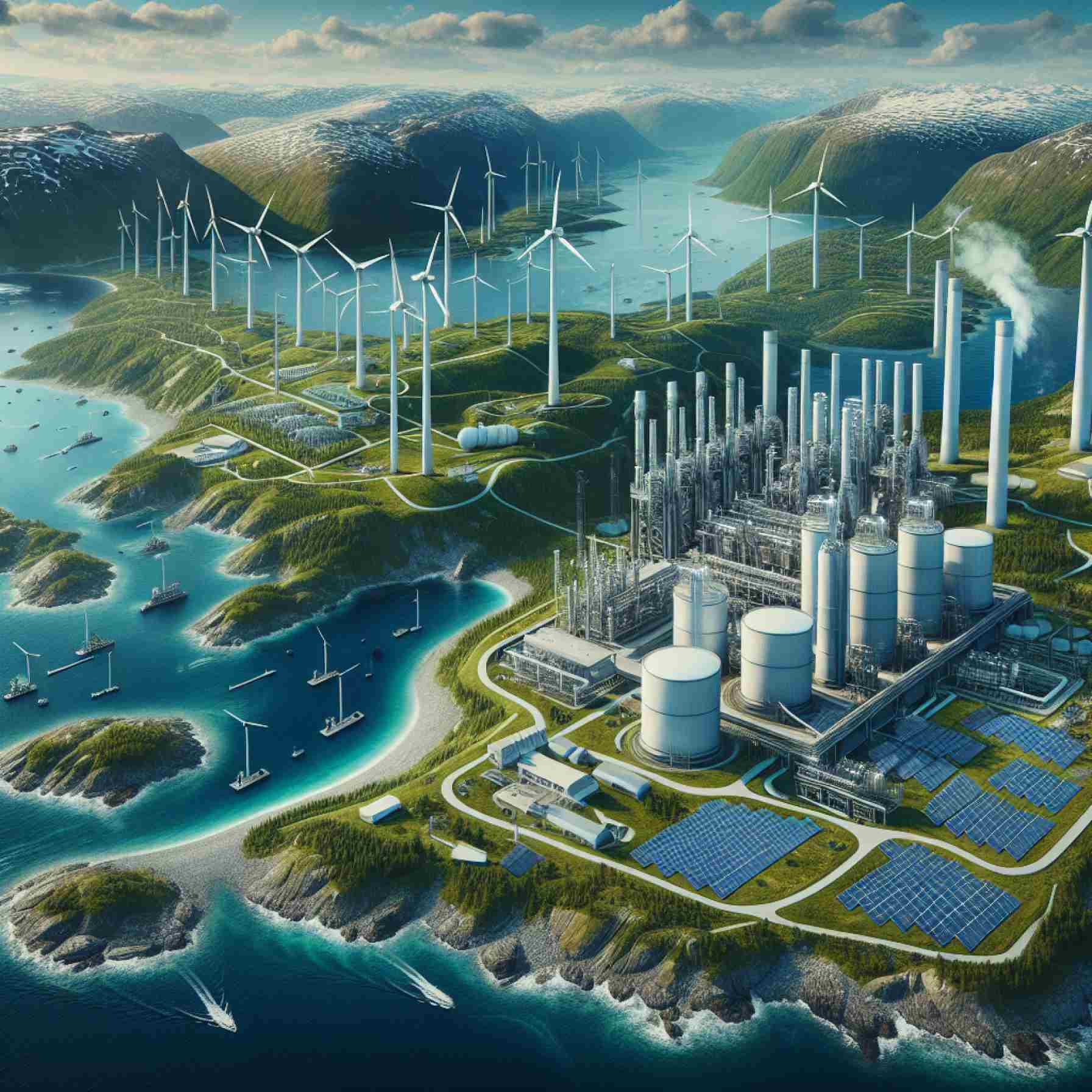- A groundbreaking green hydrogen facility is being developed at Langstranda in Bodø, Norway, in collaboration with Cyient, GreenH, and Luxcara.
- This project represents a major stride toward Europe’s clean energy revolution and aims to enhance the maritime and heavy transport sectors.
- Norway’s commitment to green maritime solutions is illustrated by providing hydrogen fuel for Torghatten Nord AS’s Vestfjorden ferries.
- Cyient brings strategic expertise in renewable energy, handling owner’s engineering and detailed plant engineering services.
- The collaboration embodies international cooperation, showcasing new paths for countries to adopt sustainable energy practices.
- Green hydrogen, an efficient energy carrier, is key to achieving carbon-neutral journeys and a cleaner future.
Nestled against the dramatic fjords of Norway, the city of Bodø is poised to redefine the landscape of renewable energy. A collaboration involving Indian engineering powerhouse Cyient and forward-thinking entities GreenH and Luxcara is transforming ambition into reality by spearheading the development of a groundbreaking green hydrogen facility at Langstranda.
This venture symbolizes more than a technical project—it’s a bold stride towards a sustainable future. With the harnessing of renewable energies to produce green hydrogen, Bodø marks a significant milestone in Norway’s quest to lead Europe’s clean energy revolution. The endeavor promises to bolster the maritime sector and heavy transport industries, setting a compelling standard for environmental innovation.
As groundwork began in the autumn of 2024, the vision casts a far-reaching impact by ensuring Torghatten Nord AS will receive a reliable supply of hydrogen fuel for its Vestfjorden ferries. Such advances underscore Norway’s commitment to pioneering green maritime solutions, with hydrogen fuel representing a vital component of this transformation. This new fuel, known for its efficiency as an energy carrier, is set to power the resplendent waterways, embodying a new era of carbon-neutral journeys.
Known for its strategic prowess, Cyient brings to the table unparalleled expertise in renewable energy projects. The company assumes a crucial role, charged with providing owner’s engineering and detailed plant engineering services. With GreenH’s commitment and Cyient’s engineering acumen, the partnership upholds a vision of effective and economic energy solutions, streamlining every phase of the plant’s lifecycle.
This project is a splendid example of international cooperation in the face of global energy challenges. Cyient’s involvement not only underscores its leadership in green technology but illuminates a path for other countries to embrace cleaner energy frameworks.
As the vibrant landscape of Bodø becomes a backdrop for this monumental undertaking, one can’t help but feel a surge of optimism. The very air seems charged with the promise of cleaner, greener innovations driving the world forward. In this vigorous stride towards sustainability, Bodø and its collaborators demonstrate that the quest for renewable energy isn’t merely a vision for tomorrow—but an unfolding reality of today.
Revolutionizing Renewable Energy: Bodø’s Bold Green Hydrogen Initiative
In the heart of Norway’s awe-inspiring fjords, the city of Bodø stands poised as a beacon for sustainable energy innovation. The advent of a state-of-the-art green hydrogen facility is turning this ambition into a transformative reality. Collaborations between engineering giant Cyient, and visionary initiatives by GreenH and Luxcara, are set to redefine how we perceive renewable energy, with pivotal implications for green hydrogen’s role in the maritime and heavy transport sectors.
Exploring the Role of Green Hydrogen
Green hydrogen, produced through electrolysis powered by renewable sources, is crucial in reducing carbon emissions. This makes it a cleaner and sustainable alternative to fossil fuels, particularly in sectors that are hard to decarbonize, such as shipping and heavy-duty transport.
1. How-To Implement Green Hydrogen in Maritime Transport:
– Infrastructure Development: Building refueling stations and upgrading existing maritime infrastructure.
– Integration: Adapting vessels and engines to efficiently utilize hydrogen fuel cells.
– Stakeholder Engagement: Collaborating with manufacturers, government bodies, and environmental organizations.
2. Real-World Applications:
– Nordic Shipping Industry: Companies like Torghatten Nord AS are set to benefit immediately, ensuring clean energy for Vestfjorden ferries.
– Heavy Transport: Hydrogen-powered trucks and buses can dramatically reduce urban pollution levels.
Market Trends & Industry Insights
– Growing Investments: The global green hydrogen market is projected to grow exponentially, with an increasing number of governments and private entities investing in hydrogen technologies.
– Policy Support: Norway, along with the EU, supports hydrogen as a key component to achieving climate neutrality by 2050.
Evaluating Cyient’s Impact and Contributions
Cyient’s role extends beyond mere technical expertise. It is leading the charge in renewable energy innovation by:
– Engineering Excellence: Providing critical engineering solutions ensuring project execution from design to deployment.
– Economic Enhancements: Optimizing energy solutions that lower costs and improve efficiency, marking an industry standard for future projects.
Pros and Cons of Green Hydrogen Transition
Pros:
– Sustainability: Zero emissions during use.
– Energy Security: Reduces reliance on imported fossil fuels.
– Versatility: Can be converted into electricity and used for various applications including heating.
Cons:
– High Production Costs: Current expense of electrolysis remains a hurdle.
– Storage Challenges: Hydrogen requires special tanks due to its low energy density.
Addressing Common Queries:
Is green hydrogen feasible on a large scale?
Yes, although currently costly, advances in technology and increased renewable energy capacity make it progressively viable.
How is green hydrogen different from other hydrogen types?
Unlike grey or blue hydrogen, green hydrogen is produced using renewable energy through electrolysis, not involving fossil fuels, thus generating no emissions.
Actionable Steps for Implementation
1. Invest in Research: Focus on reducing electrolysis costs through innovation.
2. Policy Initiatives: Governments should offer subsidies and incentives to catalyze adoption.
3. Public-Private Partnerships: Collaborative efforts can amplify resource pooling and expertise sharing.
In summary, Bodø’s foray into green hydrogen-led innovation paves a promising path for renewable energy pursuits worldwide. As we progress towards a sustainable future, the amalgamation of government policies, innovative technologies, and international collaborations emerges as the backbone of this burgeoning green revolution.
For more on the cutting edge of renewable energy advances, explore Cyient‘s contributions globally.
